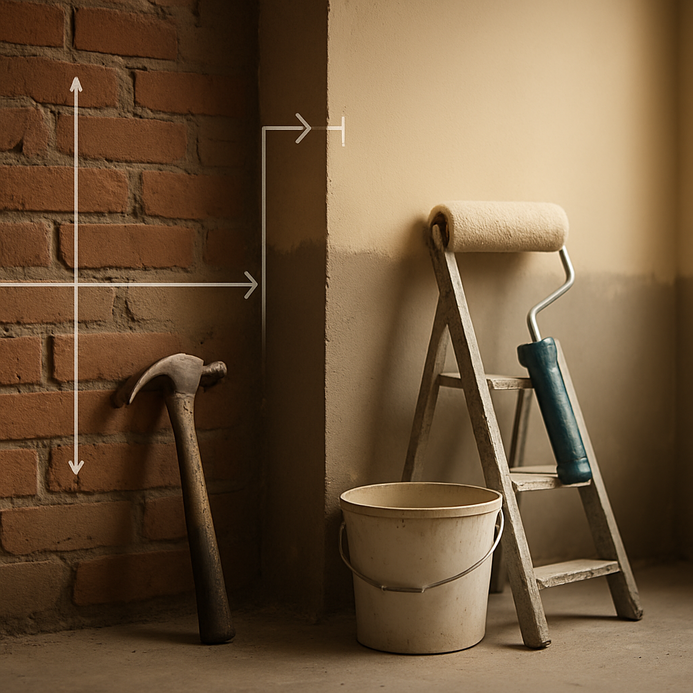How To Add a Co-Owner to Your Property in Telangana: Step-by-Step Guide
Introduction to Co-ownership in Telangana
Co-ownership is where two or more folks share ownership of a property. Sounds straightforward, right? It’s kinda becoming a big deal in Telangana, thanks to family dynamics, inheritance issues, and investment opportunities. Think of it like this: parents adding their kiddos as co-owners, making property management easier. What’s the right way to go about it?
Understanding Co-owner Meaning
A co-owner is simply someone who shares ownership rights in a piece of property. There are different setups like joint tenancy or tenancy in common, where everyone’s rights and responsibilities are recognized. If you’re diving into property deals, knowing what being a co-owner means is crucial.
Common Circumstances for Co-ownership:
| Family Planning | Keeping properties in the family helps protect wealth. |
| Inheritance Planning | Adding heirs makes property transfer easier when someone passes away. |
| Joint Investments | Pooling money together lets multiple folks buy property together. |
Bringing in a co-owner can help dodge legal issues and make sure everyone’s interests are covered. Remember, Vasanth, among other factors, think about family dynamics and future plans regarding your property.
For more on property rights in Telangana, including co-ownership intricacies, check out this article. Grasping the legal stuff around co-ownership is super helpful if you’re planning to jump in.
Understanding the Types of Deeds
Looking to add a co-owner? You gotta know about the types of deeds you can use, mainly Gift Deeds and Rectification Deeds. Each one has its own purpose depending on what you need.
Gift Deed
A Gift Deed is a legal file that lets you hand over ownership to someone else, no strings attached. This usually happens when giving property to a spouse or kid. The perks?
- No cash exchange: You give it, and that’s it.
- Instant ownership: It’s effective right away.
- Registration’s a must: Gotta register it to make it stick.
Rectification Deed
Now, if there are mistakes in a previous deed, maybe a misspelled name or wrong property details, a Rectification Deed is the fix-it tool. Here’s what to know about it:
- It’s all about corrections: No ownership changes, just fixing things up.
- Like the Gift Deed, this needs to be registered, too.
| Type of Deed | Purpose | Registration Requirement | Transfer of Ownership |
| Gift Deed | Transfer property as a gift | Yes | Yes |
| Rectification Deed | Correct errors in a prior deed | Yes | No |
So, when you’re deciding which deed to use, think it through. If you wanna gift property, go for a Gift Deed. Mistakes? A Rectification Deed is your best bet.
Understanding what co-owner means is key. For more, check this article on Gift Deeds and Wills.
Essential Documentation Required
Want to make someone a co-owner? Here’s a list of must-have documents to get it done in Telangana. It’ll keep you organized.
Required Documents:
| Document Type | Description |
| ID Proof | ID proofs like aadhar, passport, or voter ID from all co-owners are needed. |
| Existing Title Documents | Original title deed and past sale documents for verification are essential. |
| Relationship Verification | Proof of how you’re related to the co-owner, like a marriage certificate, will be needed. |
| NOC from Existing Owners | If there are other owners, get a No Objection Certificate consenting to the new co-owner. |
| Application Form | Fill the form for property co-ownership at the local sub-registrar office. |
| Payment of Stamp Duty | Pay the required stamp duties as directed by state laws for property transactions. |
| Encumbrance Certificate | This shows the property is free from legal issues. |
Gathering these docs will make adding a co-owner way smoother. Check our guide on property tax in Hyderabad.
Want to explore the relationship dynamics around co-ownership? Practical examples can be found in our guide on property and casualty insurance.
Stamp Duty Calculation and Payment Process
In Telangana, stamp duty for property transactions can vary a lot based on what kind of property you’re dealing with. Usually, it’s between 3% and 7%. Here’s how it typically breaks down:
| Property Type | Stamp Duty Rate (%) |
| Residential | 4% |
| Commercial | 7% |
| Agricultural Land | 1% |
To calculate what you owe in stamp duty, just multiply the property value by the appropriate percentage. So, if a residential property is worth ₹50,00,000, here’s how you’d figure it out:
50,00,000 x 0.04 = ₹2,00,000
After the math, here’s how to pay it:
- Prepare the Document: Have all necessary documents ready—like ID and property papers.
- Access the Online Portal: Head to the government’s site for stamp duty payment.
- Submit Details: Enter your property value and pick your stamp duty rate.
- Generate Payment Receipt: Once you’ve paid, save that receipt; you’ll need it for registration.
- Visit Sub-Registrar: Take the receipt and your documents to get everything squared away.
Getting this right is super critical for legal reasons and to make sure property rights are transferred without a hitch. For more info, check the Telangana Government’s official stamp duty webpage: Source
The Registration Process at Telangana SRO
Ready to register a new co-owner in Telangana? You gotta follow some steps at the local Sub-Registrar Office (SRO). Here’s a handy guide to help you along.
Steps to Register a New Co-owner:
- Gather Required Documents: Bring the original property deed, ID proof for all owners (Aadhar, PAN cards), and, if needed, a no-objection certificate from other co-owners.
- Complete the Application Form: Snag the application from the SRO or download it from the Telangana government website.
- Pay Stamp Duty: This stamp duty is based on the property’s market value. In Telangana, it usually ranges from 3%-7%, depending on the property type.
- Submit Documents: Take your filled-out application and supporting documents to the SRO. All current owners need to be there to submit everything.
- Verification Process: The SRO will check your documents. If all looks good, they’ll proceed with the registration.
- Obtain Registration Receipt: Once processed, you’ll get a receipt. Keep it safe, as it’s important for picking up the registered deed.
- Final Document Collection: You can collect the registered deed after a set time, typically days to weeks.
Helpful Tips:
- Get there early to skip long lines.
- Double-check all your documents before going in.
- Think about hiring a legal expert if you hit any snags, especially with existing co-owners, like Vasanth.
Additional Information:
| Document | Requirement |
| Identity Proof | Needed from all owners |
| Property Deed | Original required |
| Application Form | Fill out at SRO |
Follow these steps to make the registration process at the SRO in Telangana smooth. For more on property registration topics, check this article on property and casualty insurance.
FAQ
- What is co-ownership? Co-ownership is a legal arrangement where two or more individuals hold ownership rights to a property. This arrangement can simplify management and distribution of property.
- What types of deeds are used for transferring property ownership? The two main types of deeds are Gift Deeds, used for gifting property, and Rectification Deeds, used for correcting errors in previous deeds.
- What documents are required to add a co-owner? Essential documents include ID proofs, existing title documents, relationship verification, a NOC from existing owners, and an application form.
- How is stamp duty calculated in Telangana? Stamp duty is calculated based on the property’s value, with rates typically ranging from 1% to 7% depending on property type.
- What is the process to register a new co-owner in Telangana? The process includes gathering required documents, filling out an application form, paying stamp duty, and submitting documents to the local SRO.













